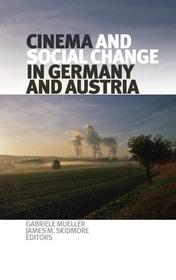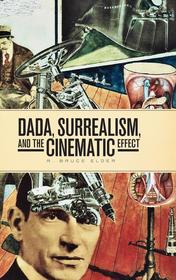Film & Video
Excerpt from the Prologue to Avatar and Nature Spirituality edited by Bron Taylor
I first saw Avatar shortly after its release in December 2009. Like most viewers, I found the bioluminescent landscape of Pandora stunningly beautiful. I was also moved by the storylines: the against-all-odds resistance by the native inhabitants of Pandora against violent, imperial invaders; the turncoats from the invading forces who join the resistance; and the love stories. Sure, there is the formulaic story âââ€Â¬Ã¢â‚¬Å“ male and female find love, lose love, and find it again âââ€Â¬Ã¢â‚¬Å“ Ãâ€Ã‚Âbut there is also the love of a people for their home and their wild flora and fauna, a contagious love that subverts the ecological and spiritual understandings of some invaders, leading them to take a stand with those they have come to exploit.
The film's producer, writer, and director, James Cameron, is adept at evoking emotional responses from his audiences and making huge sums of money along the way. Indeed, no one's films exemplify the blockbuster, money-making film genre better than Cameron's Terminator, Aliens, Titanic, and now Avatar, which banked $2. 8 billion within the first two years after its release, 73 per cent of which came from outside the United States.1 The figure would have been significantly higher had not the Chinese government cut short the film's run, reportedly out of fear that it might encourage resistance to development projects and the government's resettlement schemes (Stanton 2010). The film also gained wide recognition for its many technical innovations and won many awards, including best film drama and best director at the Golden Globe Awards (which is decided by the Hollywood Foreign Press Association) and three of the nine Oscars for which it was nominated (although not for best picture or director). The attendance records and professional accolades provide one marker of the film's appeal. But is there more to the film than tried-and-true narratives of injustice being overcome and romantic dreams fulfilled? Is it significant in some way other than for its technical achievements and profit making?
When I first saw the film, I certainly thought this might be the case. For more than twenty years, I had been tracking the development and increasing global cultural traction of nature-based spiritualities, paying special attention to how such spiritualities contribute to environmental activism.2 My book documenting these trends, Dark Green Religion: Nature Spirituality and the Planetary Future (2010), came out shortly before the release of Avatar. In it, I argued that spiritualities that stress ecological interdependence and mutual dependence, involve deep feelings of belonging and connection to nature, and express beliefs that the biosphere is a sacred, Gaia-like superorganism, were taking new forms and exercising increasing social and political influence. These sorts of nature-based spiritualities generally cohere with and draw on an evolutionary and ecological worldview, and therefore stress continuity and even kinship among all organisms. They also often have animistic dimensions, in which communication (if not also communion) with non-human organisms is thought possible. Consequently, these "otherkind" are considered to have intrinsic value (regardless of whether they are useful in some way to our own species) and should be accorded respect, if not reverence. Uniting these Gaian and animistic perceptions, I argued, is generally a deep sense of humility about the human place in the universe in contrast to anthropocentric conceits, wherein human beings consider themselves to be superior to other living things and the only ones whose interests count morally.
In Dark Green Religion, I examined a wide range of social phenomena that expressed and promoted such spiritualities. Recognizing that the evolutionary-ecological worldview that fuels dark green spirituality has had only a century and a half to incubate and spread, and noting that despite this, the trends I had identified were rapidly gathering adherents and momentum, I speculated that we could be witnessing the nascent stages of a new global nature religion. Such a religion would have affinities with some aspects of the world's long-standing and predominant religious and philosophical traditions, and it would, in some cases, fuse with them, I suggested. Moreover, such dark green spiritualities could also coexist (rather than fuse) with the environmentally progressive forms of the world's long-standing religious traditions, uniting in common action to protect the biosphere, even if profound differences remained about the sources of existence. I also suggested that dark green religious forms might increasingly supplant older meaning and action systems, because the dark green forms more easily cohere with modern scientific understandings than religious worldviews involving one or more invisible divine beings. Consequently, the dark green forms could more easily adapt than most long-standing religions to new and deeper scientific understandings, especially when compared to religions that reify their "ultimate sacred postulates"Â by chiselling them, physically or metaphorically, into inviolable sacred texts.3
These were the possibilities running through my mind when I first saw Avatar. I had already spent considerable time looking at artistic productions, including documentaries and theatrical films that exemplified dark green spirituality; after seeing Avatar, I immediately thought it was another exemplar of such green religion. Moreover, as it broke box office records, I could not help but wonder if the film was evidence that global, cultural receptivity to the ideas prevalent in dark green religion was even more profound than I had previously thought. I also wondered if Avatar would prove to be the most effective "dark green"Ãâ€Ã‚ propaganda yet produced. In short, I thought, there might well be something exceptionally significant about the film, even if the ideas expressed in it were nothing new and even though some would conclude that the film was not great art. I suspected not only that Avatar was a reflection of the global emergence of dark green religion but that it might even effectively advance such spirituality and ethics.
In his public statements about the film, Cameron has expressed a clear intention to promote themes that are central to what I have called dark green religion. When accepting his Golden Globe Award for best picture, for example, he said: “Avatar asks us to see that everything is connected, all human beings to each other, and us to the Earth. And if you have to go four and a half light years to another, made-up planet to appreciate this miracle of the world that we have right here, well, you know what, that's the wonder of cinema right there, that's the magic" (Associated Press 2010). Soon after, in an Oprah Winfrey television special that was broadcast shortly before the Academy Awards ceremony, Cameron repeated this theme, adding, with delight, that at the climax of the film the audience had come to take the side of nature in its battle against the destructive forces of an expansionist human civilization. Here, without using the terminology of contemporary environmental ethics, Cameron expressed an affinity for deep ecological or biocentric theories, in which nature is considered to have intrinsic value. Indeed, according to an exchange during an Entertainment Weekly interview, it appears that Cameron was even on the radical side of biocentric ethics. When an interviewer asserted, "Avatar is the perfect eco-terrorism recruiting tool," Cameron answered in an equally provocative way, "Good, good, I like that one. I consider that a positive review. I believe in ecoterrorism" (Moorhead 2010).4
In the light of such statements, it seems clear that dark green themes and activist motivations underlay the film's production. Furthermore, the negative reaction to the film by most conservative commentators, whether political or religious, revealed significant concern that such views and imperatives might be gaining more adherents and cultural appeal. But while pundits and scholars speculated about the possible significance and influence of the film, they usually supplied little evidence to support their assertions. So I began to gather such evidence, establishing a website domain to track relevant information as it unfolded.5 I knew that a more concerted inquiry was needed.
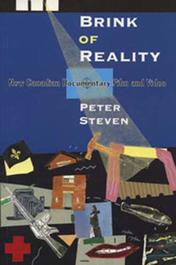
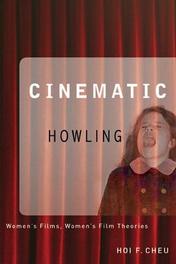
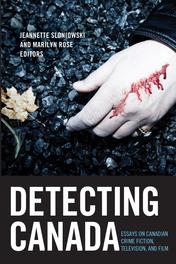
Excerpt from Detecting Canada: Essays on Canadian Crime Fiction, Television, and Film edited by Jeannette Sloniowski and Marilyn Rose
From the Introduction
[T]his book represents, we hope, the beginning of more concentrated scholarly engagement with this particular field in Canadian popular narrative. The time seems right, especially given the potentialities of the increasingly rich electronic “archives” that characterize the Internet at present. Not only are books, television, and film increasingly available through online vendors such as chapters. indigo. ca and amazon. ca, but scholarly sleuths—many of them graduate students in our flourishing programs in popular culture in Canada—are now able to access a great deal of early Canadian crime writing directly online. .. .
Because crime writing is part of Canadian mass culture, then, it is to be expected that its iterations in the form of novels, films, and television will reflect certain overarching aspects of a Canadian national imaginary that reinforce national themes and stereotypes that permeate the popular media. The first of these is undoubtedly a preoccupation with law and order, which reflects the long- standing notion that Canada was founded on an ethic of “peace, order, and good government. ”. ..
All of this having been said—and in light of our opening comments about the size of the body of Canadian crime fiction that now exists and the fact that a single collection cannot possibly address its fullness and potential—Detecting Canada seeks to make available a body of critical commentary on a Canadian genre that, while vital and recognized in terms of sales and by book awards, has had little attention paid to its history and its accomplishments as a popular genre. .. .
Together this collection of essays presents a wide range of topics and approaches to Canadian crime fiction and seeks as a collection to shed light on this under-investigated Canadian genre in its various guises and modes. Our goal has been to start the ball rolling and to encourage others to attend critically to the development of this capacious and flexible genre as a way of expressing—and at times contending with—the complex national imaginary within which we continue to construe and negotiate our communal existence.
From Chapter 1 Coca-Colonials Write Back: Localizing the Global in Canadian Crime Fiction by Beryl Langer
Canadian crime fiction is particularly rich in strategic potential given its “realist” codes and the importance of “law and order” in the discursive formation of Canadian difference—remember we are in the realm of myth here, not the actual social formation that has its share of crime, violence, and killers whose bizarre acts of creative sadism equal any in the world. .. .
The popularity of crime fiction in the 1980s and 1990s, and the emergence of regional, feminist, and national variants on the American hard-boiled genre, is in that sense not surprising. For Canadian nationalists, this general sense of fin-de-siècle risk is compounded by anxiety about national survival, generated by separatist pressure from within and the permeability of the U. S. —Canadian border—a mere line on the map, which offers no protection against “pollution” from the south, which, whether in the form of acid rain or crime and violence, will gradually obliterate Canadian difference altogether.
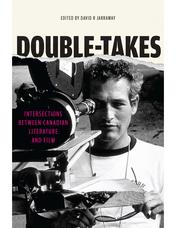

Excerpt from Ecologies of the Moving Image: Cinema, Affect, Nature by Adrian J. Ivakhiv
PREFACE
The world around us contains a wild phantasmagoria of images. Put more provocatively: the world around us is a wild phantasmagoria of images. We live and move in a world that swirls with tempestuous currents made of a kind of audiovisual image-substance. Photographs, films and television programs, videos and computer games – these and other moving images blend and mix with images of the external and internal worlds produced by a global array of instruments, from satellites that face down at us, to telescopes that face away from us, to MRIs, EEGs, and ultrasound sonographs that face into us, to the personal computers, cell phones, and iPads that have become our bodily and mental extensions. Together these make up imagescapes full of motion. These images move us, and we move with them. And as we do, we may realize that we too are moving images, seen and heard and perceived by others who are seen and heard and perceived by us. A world increasingly filled with moving images has remade itself into a world of moving images.
This book examines how images move us. It is not a treatise on the physics of this movement, nor is it an ethnography of ourselves in the midst of these currents. It is not particularly concerned with distinguishing between images and the supposedly "real things" represented, signified, or perhaps masked by those images. Rather, this book steps back from the immersive imageworlds in which we live in order to get a sense of what the moving image is and of what one particular history of it – the cinematic – can tell us today, at this juncture between a photographic and celluloid past and a digital future. "Cinema" refers to one form of moving image, a form that consists of structured sequences viewed by audiences and that emerged in a particular time and place (industrial-era Europe and North America) and has captivated the world over the course of the past twelve decades.
This book presents an ecophilosophy of the cinema. My goal is to think through the ecological implications of the moving images – films, videos, animations, and motion pictures of various kinds – that have proliferated in our world since the late nineteenth century. The "eco" in its philosophy does not restrict itself to the material impacts of the production of those images. It also delves into their social and perceptual effects. This book is about how moving images have changed the ways we grasp and attend to the world in general – a world of social and ecological relations – and about how we might learn to make them do that better.
This project is an ecophilosophy in the sense that it develops a philosophical framework for reconceiving our relations with moving images. This framework is intended to be pragmatic and empirical, rooted in actual experience, but it is also metaphysically speculative and radical in its implications. The works of the two philosophers on whom I draw most deeply, Charles Sanders Peirce and Alfred North Whitehead, have never to my knowledge been brought together for the task of a detailed analysis of cinematic images. To this combination, I bring insights from a broad array of other sources. These include the ideas of other philosophers, such as Henri Bergson, Martin Heidegger, Gilles Deleuze, and Félix Guattari, and a range of post-Deleuzian thinkers; as well as cultural historians' and geographers' studies of visuality and landscape, ecocritics' analyses of representations of nature and the "ecological sublime," feminist and post-colonial critiques of the "imperial gaze", cognitive and neuropsychological studies of affect and perception, neo-Marxist theorizations of film's political economies, and the work of scholars in animal studies, trauma studies, psychoanalysis, and depth psychology, among other fields.
In its essence, this book proposes and applies a model of cinema that I refer to as "process-relational." Such a model sees the world as consisting of relational processes' socio-semiotic-material events, encounters, and interactions that produce and reproduce the world anew in every moment. Of the modern art forms, I suggest that it is cinema – the art of the moving image – that comes closest to depicting reality itself, because reality is always in motion, always in a process of becoming. Cinema not only mirrors and represents reality but also shadows, extends, reshapes, and transforms it. Describing how cinema does this, and how different kinds of cinematic works do it in different ways, is the task of this book.
This book's argument takes its structure from American philosopher C. S. Peirce's categorization of things into their "firstness," "secondness," and "thirdness." Respectively, these refer, at their most basic, to a thing as it is in itself, which is its purely qualitative potency – or, in Peirce's words, its firstness; a thing in its actual, causal and existential relation with another thing – its secondness; and a relation between these two as mediated by a third so as to form an observation or logical or relational pattern – its thirdness. Following these three categories, the argument I present can be visualized as three interlocking rings, with each of the rings in turn consisting of three intertwined braids. The three rings correspond to (1) the film-world, which is the world that a film makes available to viewers; (2) the cinematic experience, which is the way that world is encountered by an actual viewer in the experience of watching and responding to a film; and (3) the context of socio-ecological relations within which a film is made, shared, encountered, and made sense of, and which is in turn changed by the experience.
Let us take these and break them down into further triads. Cinema, I argue, produces and discloses worlds. It is cosmomorphic: it provides for the morphogenesis, the coming into form, of worlds. Following Peirce's triadism, I distinguish among three dimensions of a film-world: its objectworld, which expresses cinema's "geomorphism," its taking on the form of a seemingly stable, material-like world that is there, given for agents like us to act within; its subject-world, which is its "œanthropomorphism," the world of those who are recognized – and who recognize themselves – as active subjects and agents shaping their lives within it; and its life-world, the "interperceptive" and "biomorphic" world of things that are lively and dynamic, that see and hear and respond to one another, and that are constituted by an interactive to and fro between subject- and object-making. This is the first ring of our three-ring circus. 1
The second ring, the cinematic experience, has three layers as well. There is, first, the thick immediacy of cinematic spectacle, the shimmering texture of image and sound as it strikes us and resounds in us viscerally and affectively; this is the moving image that moves us most immediately and directly. Second, there is the sequential unfolding of film's narrative "eventness," the one-thingafter- anotherness that we follow in order to find out what happens next and where it will lead. And third, there is the proliferation of meanings that arise once our already existing worlds are set into motion by what we see, hear, witness, and follow in watching a film or video. I call these three layers or dimensions cinema's spectacle, its sequentiality or narrativity, and its signness; and the results of each of these as they impact us are, respectively, the affective, the narrative, and the referential or semiotic.
The third ring consists of the ways in which cinema affects and interacts with the broader ecologies within which films and moving images are produced, consumed, and disposed of. These include cinema's material ecologies, such as the physical and biological relations necessary for the production of films and the material impacts of that production; and its social ecologies, namely, the social interactions that go into film production and the effects on society of depictions of social actors and groups. But they also include an intermediate realm that I call cinema's perceptual ecologies, a realm in which images and sounds, looks and listens, are exchanged and transmitted among the elements of a world that is communicative by its very nature. Each of these sets of ecologies has been radically altered as moving image media have become established as perhaps the most powerful currency of communication in our world.
This book, then, attempts to understand the nature of the worlds that cinema creates; the ways we are drawn into those worlds, cognitively and affectively, by following their lures and negotiating relations with them; and how those worlds relate to the extra-filmic world – the world that exists before cinema as well as alongside it, and one that continues to exist – albeit in a changed way – after cinema has done its work upon it.
An ethical imperative underlies the model of cinema presented here: the imperative to revivify our relationship to the world. In the second of his Cinema volumes, philosopher and cineaste Gilles Deleuze argued that the point of cinema is "to discover and restore belief in the world, before or beyond words."2 Cinema, Siegfried Kracauer said, is our way of "redeeming physical reality."3 The world as we experience it and the world as cinema portrays it are not two different things – they are many different things. But to the extent that a shared world underlies the many, that world calls for a different and more sensitive involvement on our part than that which industrial-capitalist modernity has promoted and practised for quite some time. In the readings of films that make up the bulk of this book – films that cover a broad spectrum, from westerns and road movies to science fiction blockbusters and art films to ethnographic and nature documentaries to animation and experimental films – I highlight films and film styles that have set precedents – and those that have challenged precedents – in the cinematic creation of object-worlds, subject-worlds, and life-worlds. I will be positing a specific synthesis of ideas and approaches by which we might think about film and the world and applying these ideas to the history of cinema.
This book is directed at several distinct audiences. I hope to entice other film theorists and critics to recognize the virtues of an approach to cinema that is ecological in its sensibility and that is rooted specifically in the process philosophies of Whitehead, Peirce, Deleuze, and others. I hope to entice other ecocritic – and environmentalists more generally – to think ontologically and philosophically and to grapple with cinema in more ambitious ways than they have typically done. I hope to attract students of diverse fields – including film, media, and cultural studies, as well as philosophy and environmental studies – to the task of thinking deeply about the relations among cinema, nature, and humanity. And I aim to satisfy those film lovers who simply want an interesting read about many films they have seen and some they have not seen, and who are willing to take up the intellectual challenge that any novel philosophical approach requires. If this book can provide new tools for taking up that challenge, then it will have succeeded.


